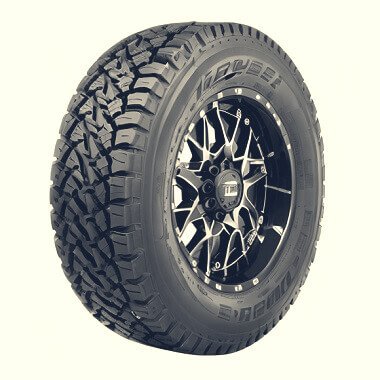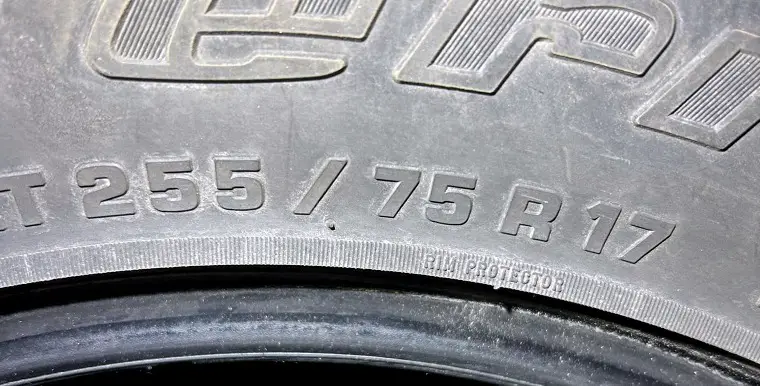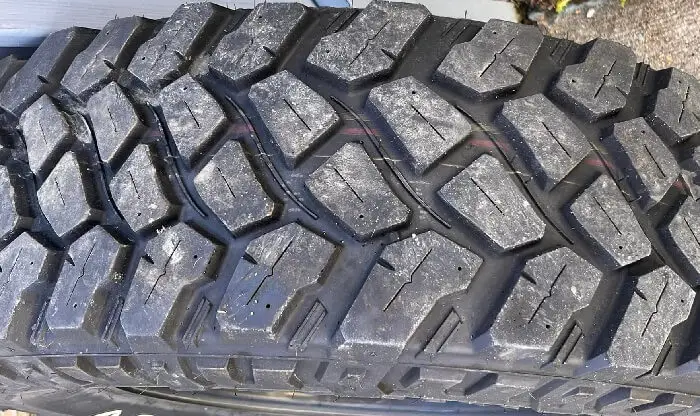Tire Size 285/70r17 vs 255/75r17

Are you considering switching from 285/70R17 to 255/75R17 tires on your vehicle? While these sizes are similar, there are some important differences to understand before making the swap.
- 2% smaller diameter falls within the acceptable range for fitment
- 10.5% narrower width may slightly improve fuel efficiency and steering response
- Taller sidewall ratio provides a marginally smoother ride on-road
- Speedometer will read about 0.68 mph slow at 20 mph due to 2% more revolutions per mile
285/70r17 vs 255/75r17
The main difference between 285/70r17 and 255/75r17 tires is that the 285/70r17 tires are 1.18 inches (30 mm) larger in section width than the 255/75r17 tires.

Fitment Guide
With a 2% larger overall diameter, 285/70R17 tires remain within the 3% limit for directly replacing 255/75R17 tires. No modifications are needed, but the slightly larger size will cause a minor speedometer inaccuracy.
On-Road Impact
Switching to a narrower tire like the 255/75R17 can have several effects on your on-road driving experience. Here are some key areas to consider:
- Fuel Efficiency: Narrower tires generally have lower rolling resistance, which can slightly improve your gas mileage. The 2% difference in revolutions per mile between these sizes could lead to a small uptick in fuel efficiency.
- Handling: The narrower 255/75R17 tires may provide a slightly more responsive steering feel compared to the wider 285/70R17 tires. However, the wider tires can offer more stability during cornering.
- Ride Comfort: Due to their taller sidewall (75 aspect ratio vs 70), 255/75R17 tires may provide a slightly smoother ride as they can absorb bumps and vibrations more effectively than the 285/70R17 tires.
- Speedometer Accuracy: Because 255/75R17 tires have 2% more revolutions per mile, your speedometer will read about 0.68 mph slow at 20 mph. This isn’t a huge difference but is something to be aware of.

Off-Road Impact
If you venture off-road, the switch from 285/70R17 to 255/75R17 tires can also influence your vehicle’s performance. Consider these factors:
- Traction: The wider footprint of 285/70R17 tires can provide better flotation and traction on soft surfaces like sand or mud. Switching to narrower 255/75R17 tires may slightly reduce off-road traction.
- Ground Clearance: 255/75R17 tires have a sidewall height that is 0.32 inches (8.25 mm) shorter than 285/70R17 tires. This small difference in sidewall height can minimally reduce your ground clearance, but the effect is likely negligible for most off-road situations.
- Durability: The taller sidewall of 255/75R17 tires provides a bit more cushion against rocks and obstacles compared to 285/70R17 tires. This could slightly improve durability and resistance to punctures or damage when off-roading.

What is the Difference Between 285/70r17 and 255/75r17?
The primary difference between 285/70R17 and 255/75R17 tires is the width. 285/70R17 tires are about 1.18 inches (30 mm) wider than 255/75R17 tires.
Can I Use 255/75R17 Instead of 285/70R17?
Yes, you can use 255/75R17 tires instead of 285/70R17 tires. The overall diameter difference between these sizes is 2%, which falls within the generally acceptable range of 3% when replacing tires. However, it’s always best to check your vehicle’s specific recommendations.
How Much Taller Is a 285/70R17 Tire Than a 255/75R17?
A 285/70R17 tire is approximately 0.65 inches (16.5 mm) taller than a 255/75R17 tire. The overall diameter of a 285/70R17 tire is 32.71 inches (830.8 mm), while a 255/75R17 tire has a diameter of 32.06 inches (814.3 mm).

How Much Wider is a 285/70R17 Tire Than a 255/75R17?
A 285/70R17 tire is approximately 1.18 inches (30 mm) wider than a 255/75R17 tire. The width of a 285/70R17 tire is 11.22 inches (285 mm), whereas a 255/75R17 tire has a width of 10.04 inches (255 mm).
Our Observations
After analyzing the differences between 285/70R17 and 255/75R17 tires, we believe that for most drivers, the impact of switching between these sizes will be relatively minor.
The 2% difference in overall diameter and 10.5% difference in width are noticeable but not drastic. On-road, you may experience a small improvement in fuel efficiency and ride comfort with 255/75R17 tires, but handling differences will be subtle.
Off-road, the wider 285/70R17 tires have a slight advantage in traction, but 255/75R17 tires may prove a touch more durable. Ultimately, both tire sizes will work well for most applications.
Your decision may come down to factors like vehicle fitment, tire availability, tread design, and personal preferences around look and feel. We recommend weighing the pros and cons based on your specific needs and priorities.

Meet Caitlin McCormack, a Tire Size Expert and Blogger Passionate About Everything Related to Tires. With Years of Experience in the Tire Industry, Caitlin Has Become an Expert in Tire Sizes and Their Impact on Vehicle Performance.
